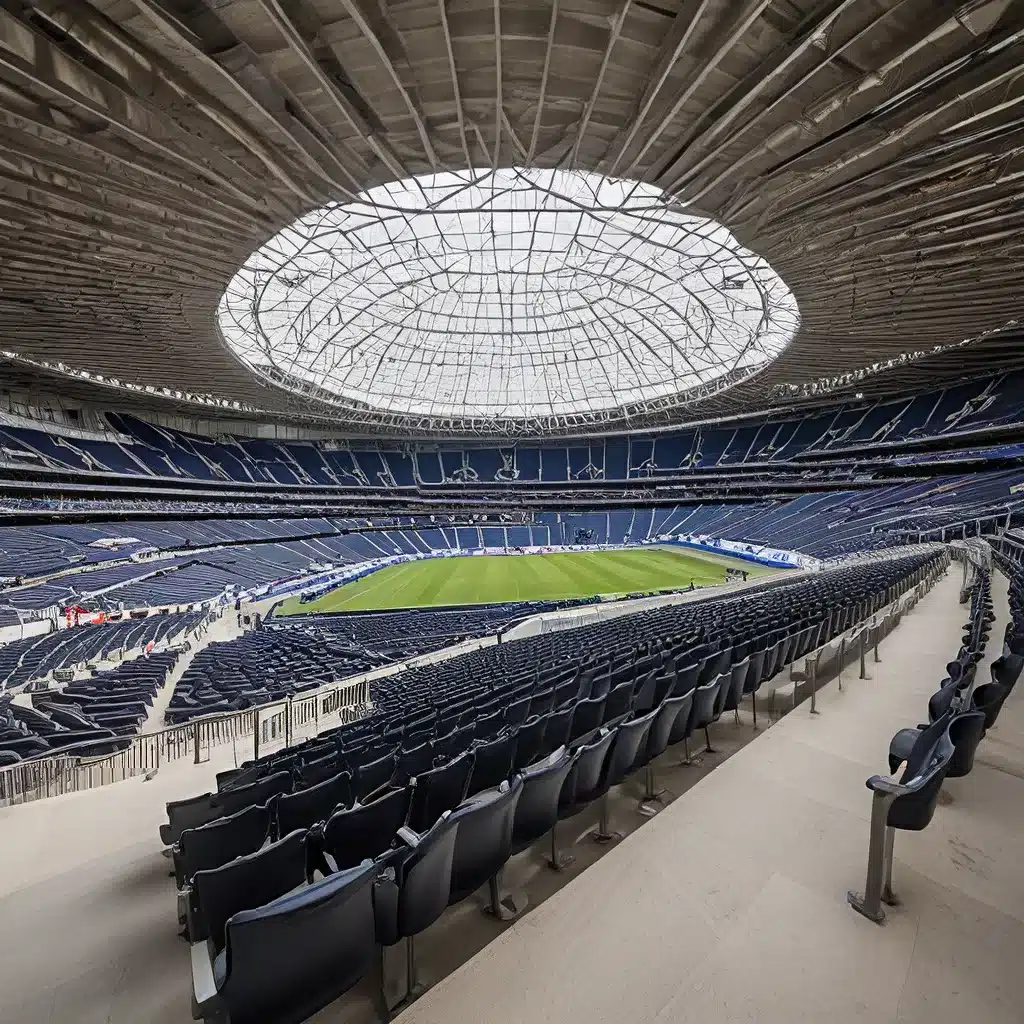
The Influence of Renaissance Architecture
The Stade de France, located in the Parisian commune of Saint-Denis, stands as a testament to the marriage of modern engineering and the timeless principles of Renaissance architecture. Constructed for the 1998 FIFA World Cup, this iconic stadium seamlessly blends the grandeur and symmetry of the Renaissance style with cutting-edge design, creating a harmonious and visually striking structure.
The Renaissance architecture that influenced the Stade de France’s design can be traced back to the early 15th century, when a conscious revival of certain elements of ancient Greek and Roman thought and material culture took hold in Europe. This architectural movement, which followed the Gothic style and preceded the Baroque, placed a strong emphasis on symmetry, proportion, geometry, and the regularity of parts, as demonstrated in the architecture of classical antiquity.
One of the key figures who helped shape the Renaissance architectural style was Filippo Brunelleschi, the innovative architect behind the iconic dome of the Florence Cathedral. Brunelleschi’s mastery of order and proportion laid the foundation for the Renaissance’s exploration of architectural concepts and the formulation of new rules. His influence can be seen in the Stade de France’s overall design, which seamlessly integrates classical elements with modern engineering.
The Stade de France: A Blend of Past and Present
The Stade de France’s design, led by the renowned architectural firm Macary, Zublena, Regembal and Costantini, skillfully combines the principles of Renaissance architecture with the demands of a modern, large-scale sports venue. The result is a stunning structure that pays homage to the past while embracing the technological advancements of the present.
One of the most striking features of the Stade de France is its symmetrical layout, a hallmark of Renaissance design. The stadium’s two main stands, situated on the north and south sides, are perfectly aligned and mirrored, creating a sense of balance and visual harmony. This symmetrical arrangement is further accentuated by the ordered placement of the stadium’s arched entrances and the repetition of architectural elements throughout the structure.
Renaissance architecture also influenced the Stade de France’s use of classical columns and arches, which are integrated seamlessly into the stadium’s design. These architectural features, reminiscent of ancient Roman and Greek structures, lend the Stade de France a sense of grandeur and timelessness, juxtaposing the modern engineering required to build a large-scale sports venue.
Innovative Engineering and Technology
While the Stade de France’s Renaissance-inspired design is a prominent aspect of its architectural identity, the stadium is also a testament to the innovative engineering and cutting-edge technology that brought it to life.
The stadium’s retractable roof, for example, is a marvel of modern engineering. Capable of opening and closing in just 20 minutes, the roof allows the Stade de France to host events in any weather, ensuring a comfortable experience for spectators and athletes alike. This technical feat is a far cry from the fixed roofs and domes of the Renaissance era, demonstrating the remarkable progress in construction and materials science.
Furthermore, the Stade de France’s seating capacity of 81,338 makes it one of the largest stadiums in Europe, a testament to the engineers’ ability to create a spacious and functional venue without compromising the harmonious proportions and symmetrical design inspired by the Renaissance.
The Stade de France’s blend of historic architectural influence and modern engineering has made it a truly iconic sports venue, admired by fans and architects alike. Its seamless integration of the past and present serves as a shining example of the enduring power of Renaissance design principles and their ability to inspire and shape the built environment of the future.
The Lasting Legacy of Stade de France
The Stade de France’s architectural significance extends beyond its role as a world-class sports venue. This stadium has become a symbol of national pride and a landmark that showcases France’s rich cultural heritage and architectural prowess.
The stadium’s design has been widely praised by critics and architectural enthusiasts for its successful blending of Renaissance inspiration and modern functionality. The Stade de France’s ability to capture the essence of the Renaissance while adapting to the demands of a 21st-century sports arena has earned it a place among the most iconic and influential stadiums in the world.
Moreover, the Stade de France has become a catalyst for urban regeneration in the Saint-Denis commune. The stadium’s construction has driven significant investment and development in the surrounding area, transforming it into a vibrant hub of activity and economic growth. This symbiotic relationship between the stadium and its local community exemplifies the power of architecture to shape and revitalize urban landscapes.
As the Stade de France continues to host major sporting events and cultural celebrations, its architectural legacy will undoubtedly endure. The stadium’s harmonious design, rooted in the principles of Renaissance architecture, serves as a testament to the timeless beauty and enduring influence of this celebrated artistic and architectural movement.
Conclusion: A Masterpiece of Modern Architecture
The Stade de France stands as a shining example of how the principles of Renaissance architecture can be seamlessly integrated into the design of a modern, large-scale sports venue. The stadium’s symmetrical layout, classical elements, and innovative engineering have earned it a place among the most iconic and influential architectural achievements of the 21st century.
The Stade de France’s harmonious blend of past and present not only captivates visitors but also serves as a powerful symbol of national pride and a catalyst for urban regeneration. As the stadium continues to host world-class events and attract admirers from around the globe, its architectural legacy will undoubtedly endure, inspiring future generations of designers and architects to push the boundaries of what is possible in the built environment.

